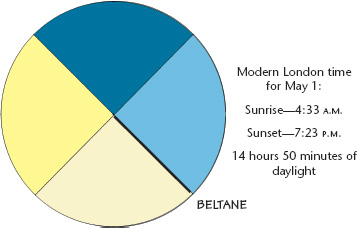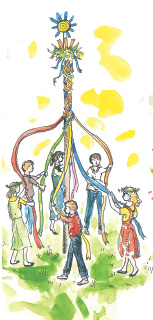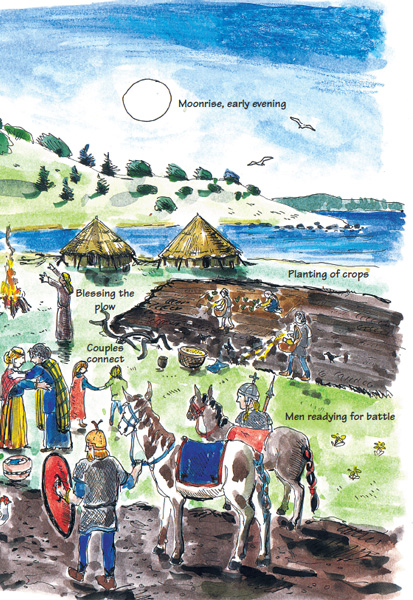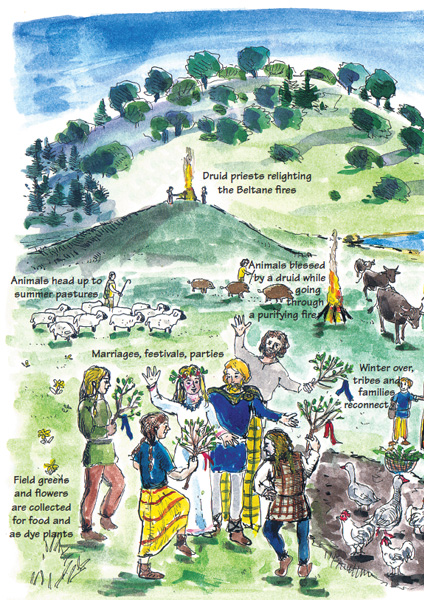Beltane—Around May 1 The First Day of Summer

Although Beltane was not the next holiday in the Celtic year, we want to talk about it next to remind you of how the Celtic year was divided into a dark half and a light half. While Samhain marked the beginning of the dark half of the year, Beltane comes exactly opposite it and marks the end of the dark time.
Beltane can be translated as “the fires of Bel.” Bel seems to be connected with the old Celtic sun god Belenos, of Gaul. This is the time of year when winter has released its grip and the killing frosts are over. The light half of the year is beginning. Clans who have not seen each other all winter can get through the mud and rainy weather to celebrate winter’s end.
The Pleiades’ descent to the lowest point in the sky, where it was no longer visible, marked the start of Beltane. This second most important day was a great fire festival. In Ireland and the Highlands of Scotland, on the eve of the festival, all the household fires would be extinguished. As on Samhain, a sacred bonfire was lit on a hilltop, usually by a druid, and the house fires were all rekindled from that Beltane, but they went off to battle from Beltane to Samhain.
While Samhain and Beltane were the key turning points of the Celtic year, each festival was given greater or lesser significance depending on where it was celebrated. So some Celtic tribes may have seen Samhain as their most important festival, while other Celtic tribes treated Beltane as the key celebration of the year and did all the important work of writing laws and passing tribal judgments at that time.
Agriculturally, the focus was on ploughing and planting the second round of crops. Early crops were usually hoed once in late April, and again in mid- to late May, to clear out weeds and thin the crop. In England, Wales, and southern Scotland, the maypole dance was more important as a Beltane observance than the ritual bonfire. The dancing was originally done around a tree that had all but its top branches cut off. The tree is a great symbol of the power of nature and of new life springing from the ground. The weaving of ribbons around the pole may have symbolized how daylight shortened in winter and lengthened in summer. And the finished pole, covered with intertwined streamers, celebrated the power of the earth. Today, the maypole has become a nonliving pole planted in the ground, usually in the center of a village or town. Morris dancers, wearing bells on their ankles and waving scarves, performed rhythmic dances to scare away the spirits of winter. Morris dances and mummers plays are full of ancient fertility symbols. In Cornwall today, morris dancing and maypoling are still very much a part of the annual Beltane festivities.


